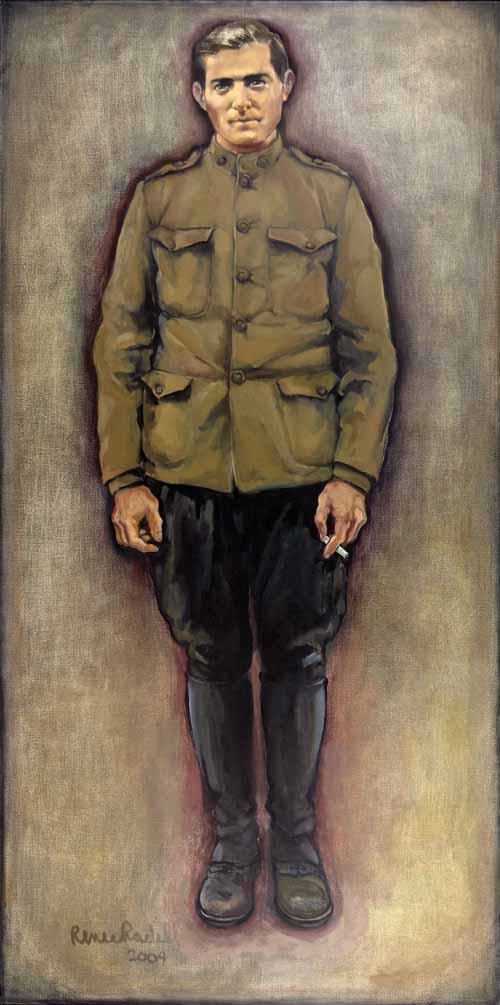Portraits by
Renee Radell
With her lifetime commitment to figurative art, it is no surprise that Renee Radell has produced portraits throughout her long career. Subjects range widely. However, one thing these paintings have in common wherever their ultimate location: in the American Figurative Expressionism tradition, they live when displayed. They cause pondering and marvel among seasoned and thoughtful art collectors and fine art enthusiasts.
It follows that creation of a portrait for Radell can be an all consuming and even agonizing project which adds an addition layer of responsibility for the conscientious artist. In short, the artist must create an aesthetically superior work, while the art must also convey personality, character and life’s circumstance of an actual person. Moreover, for Radell, expressing character through a moment’s pose captured in rich brushstrokes, with a colorist pallet and intriguing composition, is usually more important than literal realism.
Chosen subjects include family members, self-portraits, friends, and on occasion, famous people and commissioned work for patrons and art collectors. For the artist, ever a student of research, a deep understanding of the subject’s background, personality and life circumstance is crucial during the planning stages of each unique painting.
Family and Self-Portraits
When knowledge of the subject is direct and intimate, as in the case of family members, family portrait painting for Renee Radell is either an effortless exercise or emotionally draining. For example, family pictures of loved ones, such as the many depictions of husband Lloyd Radell, can range from the peaceful to the severe, as in Mirror Mirror. In a similar vein, her handsome father is calmly holding a cigarette before his tent in World War I, in “Portrait of a Photograph”.

Studying these paintings can reveal other information concerning the artist herself. For example, in certain paintings of those closest to her, including the self portrait genre, Radell’s keen senses of compassion, irony and sometimes humor and playfulness may become evident. A Renee Radell self portrait is typically self-effacing and never glamorous, as in her Rowboat of Fools and Artist with Paintcloth.
Surrealism with Portraits
True to her affinity for surrealism, symbol and allegorical content, Renee Radell sometimes includes portraits in surrealist settings, such as in Kafka & Friends wherein writer Kafka is nestled among some of his fictional characters who allow him to fulfill himself as an artist. In Standard Bearers Crossing the North Sea, the central panel from Renee Radell’s monumental triptych Night Parade in Flanders, a picture of artist van Eyck’s wife is fixed through collage to a placard within the floating ghostly vessel.
















